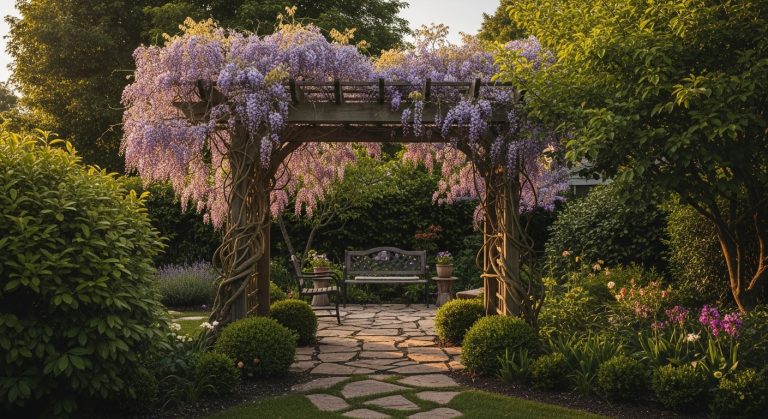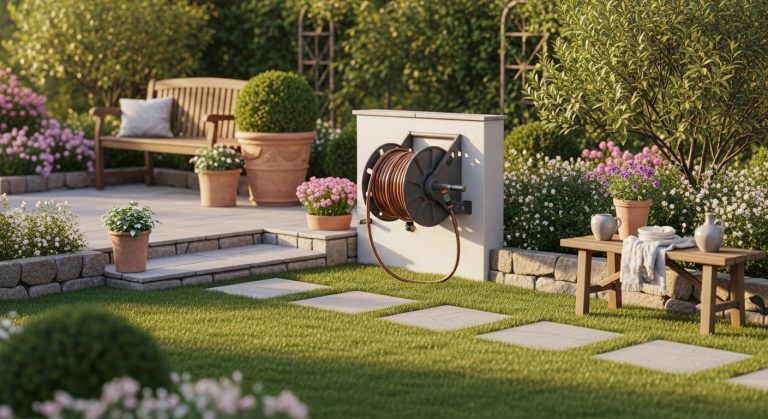Garden Park: 15 Inspiring Ways to Bring Park-Style Beauty Into Your Outdoor Space
Ever walked through a beautiful park and thought, “I wish my backyard felt even half this peaceful”? Same. There’s something about a well-designed park—open lawns, shady corners, winding paths, and tiny moments of charm—that makes you slow down without even trying. The comforting part? You can bring that park-like feeling into any outdoor space, whether you’ve got a small yard, a wide suburban lot, or a compact patio.
What pulls me toward the “garden park” concept is how comfortable it feels. Parks aren’t just pretty; they’re designed for real use. Space to walk. Space to sit. Space to breathe. And honestly, that’s what most of us crave at home, too. When you blend greenery, practical layouts, soft textures, and intentional gathering spaces, your garden becomes more of an experience than a decoration. The ideas below were chosen because they’re actually feasible, budget-friendly, lifestyle-friendly, and beautifully aligned with how people use their outdoor spaces today.
Let’s walk through 15 ideas to help your outdoor space feel more like the kind of garden park you never want to leave.
1. Wide, Walkable Lawn Area
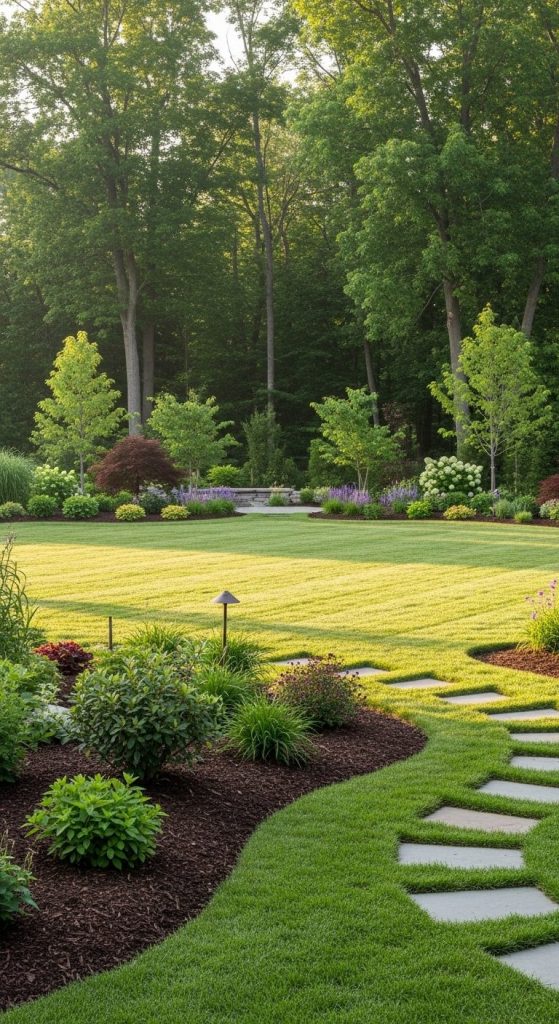
Ever notice how parks always have an open grassy section? It’s intentional. A simple lawn creates space to breathe, play, host, or just stretch out on a blanket. You don’t need a huge yard—just enough room to move freely.
Pros
- Encourages relaxation and play
- Creates visual openness
- Makes the space feel larger
Cons
- Requires regular mowing
- Grass maintenance varies by climate
Mini takeaway
A small, neat lawn gives your outdoor area that classic park feel instantly.
2. Bench Under a Shady Tree

A shady bench might be the most iconic “garden park” detail ever. And it works because it feels like a natural pause point—somewhere to sip tea, read, or just zone out for five minutes.
Pros
- Creates a peaceful sitting spot
- Looks timeless and inviting
- Works in big or small yards
Cons
- Needs a sturdy base like gravel or pavers
- Some trees drop leaves or sap
Mini takeaway
A simple bench under a reliable shade tree is one of the easiest ways to elevate your garden.
3. Curved Walking Path

Straight lines feel strict. Curved paths feel calming. That’s why parks use gentle curves—they guide you naturally and encourage slow wandering.
According to several outdoor design surveys, curved pathways are one of the most requested backyard upgrades in recent years.
Pros
- Adds movement and softness
- Helps zone your garden
- Makes your yard look larger
Cons
- Gravel paths may need topping up
- Installation requires basic planning
Mini takeaway
A winding path instantly gives your outdoor area a more tranquil, park-like layout.
4. Flower Beds Around the Perimeter
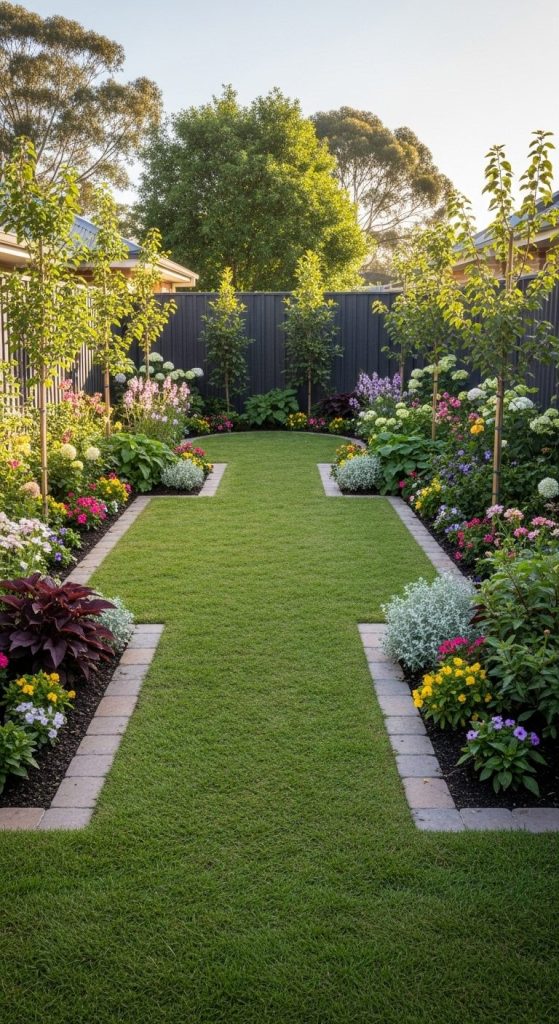
Rather than filling the middle with planting beds, push them to the edges—exactly like a public garden park. It keeps the center open while surrounding you with color.
Pros
- Defines the garden beautifully
- Easy to maintain when grouped
- Makes small yards feel organized
Cons
- Needs seasonal refreshing
- Some plants may require pruning
Mini takeaway
Border flower beds bring structure and softness without cluttering your usable space.
5. Picnic Table or Outdoor Lunch Spot

A picnic-style dining setup feels nostalgic and practical. It gives your garden park a welcoming, social vibe without needing a full outdoor kitchen.
Pros
- Encourages gatherings
- Family-friendly seating
- Durable furniture options available
Cons
- Takes up space
- Needs shade in sunny climates
Mini takeaway
A simple picnic table turns your yard into a place for real, everyday living.
6. Decorative Garden Lighting

Good lighting is what makes parks beautiful at dusk. Simple path lights, tree uplights, or soft string lights can totally shift your yard’s evening atmosphere.
Pros
- Extends usable hours
- Makes paths safer
- Highlights key features
Cons
- Solar lights need sun exposure
- Some fixtures may wear out
Mini takeaway
Soft, subtle lighting gives your outdoor space a gentle park-like glow.
7. Native Plant Sections
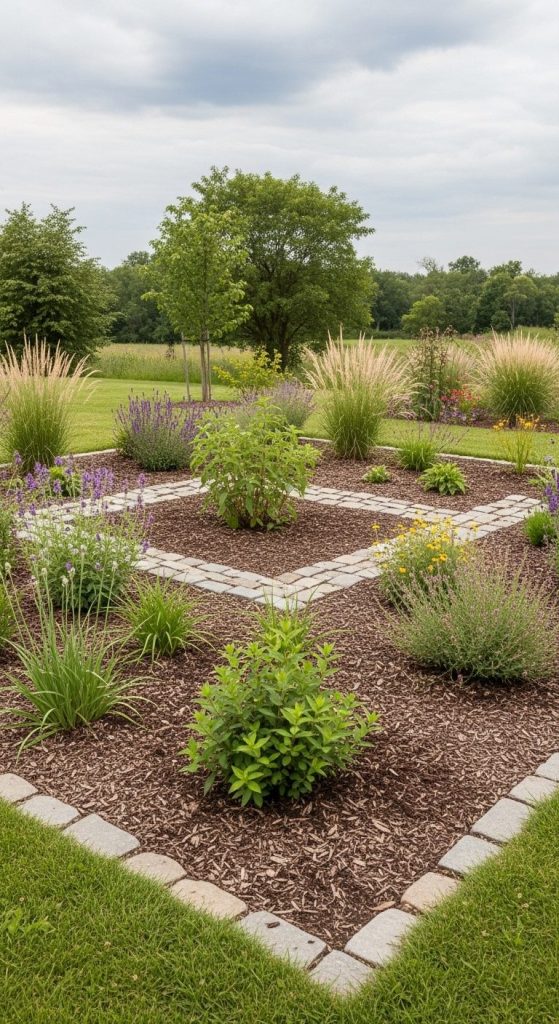
Parks use native plants because they thrive with minimal effort. Using them in your garden achieves the same low-maintenance beauty at home.
Studies from several horticultural centers show native plants support more local pollinators than imported varieties.
Pros
- Minimal watering and care
- Supports local ecology
- Works in any size garden
Cons
- May offer fewer exotic looks
- Initial placement requires planning
Mini takeaway
Native plants help your yard feel naturally lush without constant upkeep.
8. Mini Pond or Reflective Water Basin

A small pond doesn’t need to be fancy. Even a compact basin with lilies or calm water adds soothing reflection—just like the ponds you see in peaceful parks.
Pros
- Inviting, calming focal point
- Attracts birds and beneficial insects
- Adds sound and movement
Cons
- Needs cleaning occasionally
- Can attract mosquitoes if not maintained
Mini takeaway
A small, manageable water element can completely shift your outdoor mood.
9. Community-Style Seating Circle

Think of the social areas in parks—benches arranged in a semicircle, logs around a fire pit, or chairs facing inward. That setup invites connection and conversation.
Pros
- Great for hosting
- Warm, welcoming atmosphere
- Works with chairs, benches, or a fire pit
Cons
- Requires clear space
- Some seating options need weather protection
Mini takeaway
A gathering circle makes your garden feel like a shared, welcoming retreat.
10. Children’s Play Corner
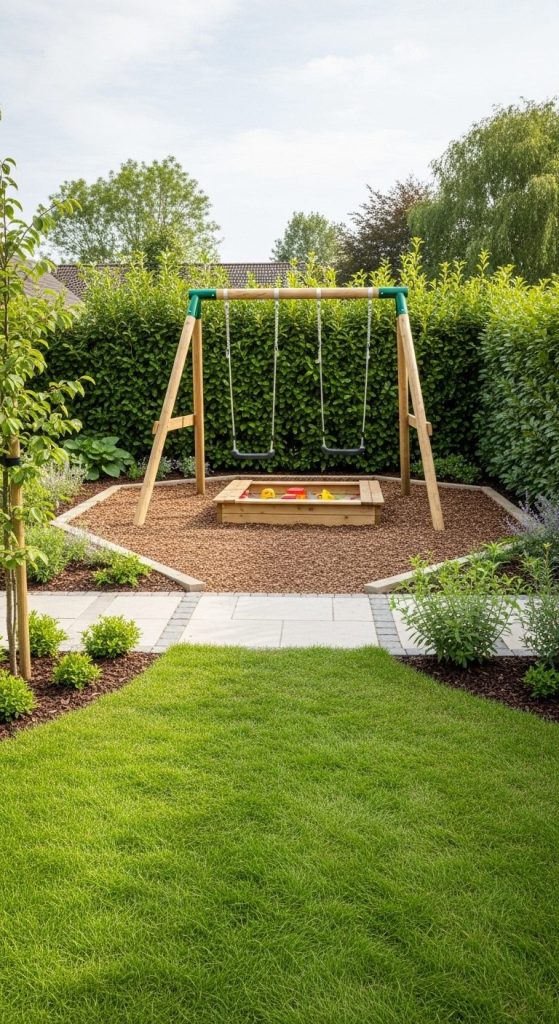
Even if you don’t have kids, this can be a whimsical touch—a swing, a sandbox, or simply a quiet corner for creativity. Many parks blend play with nature, and you can do the same.
Pros
- Family-friendly
- Adds charm and movement
- Encourages outdoor time
Cons
- Needs supervision for younger kids
- Some play features require cushioning underneath
Mini takeaway
A child-friendly nook brings playfulness and warmth to your outdoor space.
11. Trellis or Archway Entrance
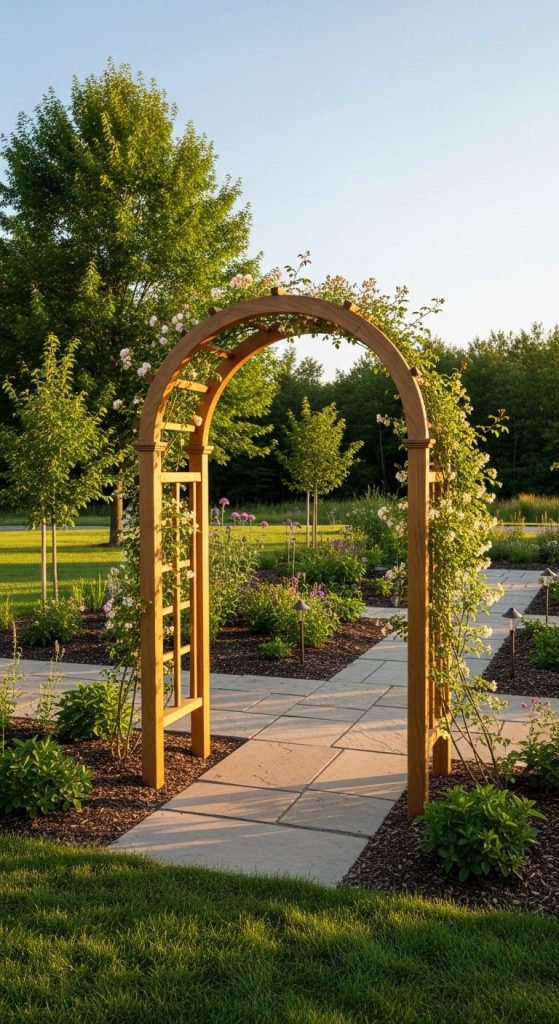
Garden parks often have charming entry points—a trellis with climbing roses, or a wooden arch welcoming you in. It instantly signals “you’re stepping into something special.”
Pros
- Adds height and character
- Frames your entrance beautifully
- Supports fragrant climbers
Cons
- Some climbers grow quickly
- Wood structures need occasional upkeep
Mini takeaway
A simple arch transforms your garden entrance into a moment.
12. Open Reading Meadow
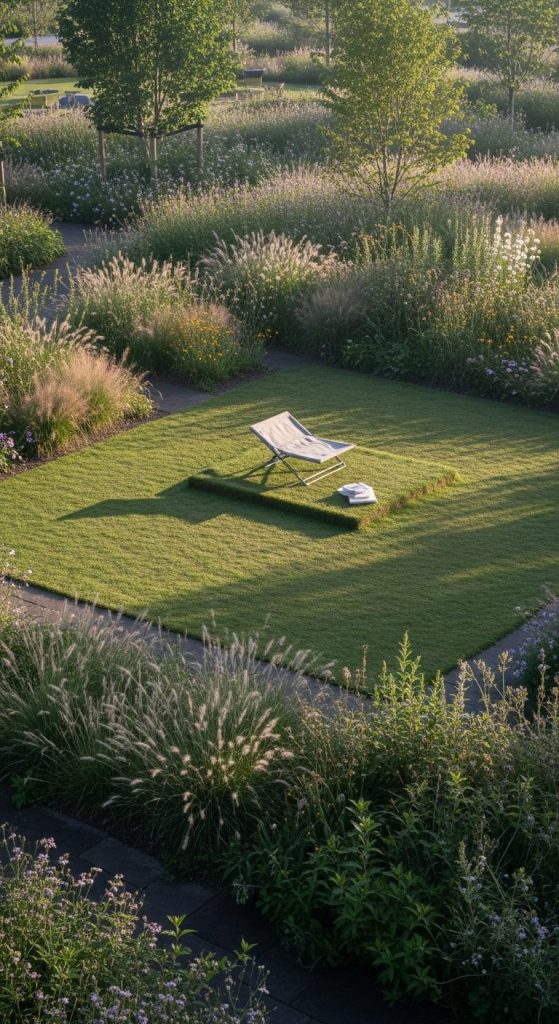
Not a full meadow—just a soft, intentionally calm area with a blanket or low chair. A quiet corner like this feels like something out of a slow Sunday park stroll.
Pros
- Cozy, quiet retreat
- Easy to set up
- Flexible for lounging
Cons
- Needs fairly even ground
- Grass may need maintenance
Mini takeaway
A small reading space adds calm and simplicity to your garden layout.
13. Raised Garden Beds Like Park Demonstration Areas
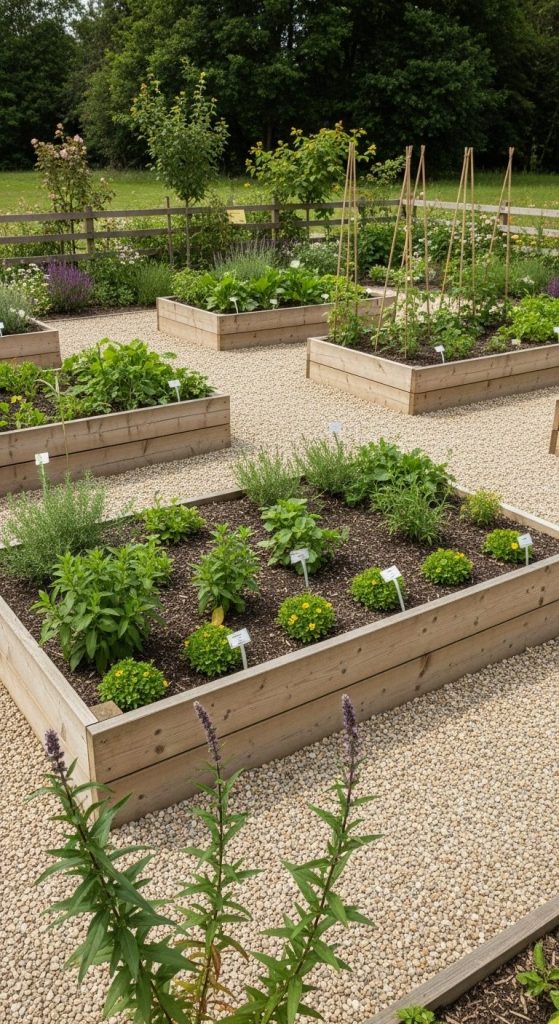
Some parks have little sections showing herbs, vegetables, or seasonal blooms. You can replicate that with raised beds—organized, clean, and functional.
Pros
- Great for beginners
- Easier on your back
- Helps soil quality and drainage
Cons
- Initial setup costs
- Requires ongoing watering
Mini takeaway
Raised beds make your yard feel both practical and beautifully curated.
14. Shaded Pergola Sitting Area

Pergolas show up in many parks because they define space and offer relief from the sun. Add climbing vines or soft drapes, and your backyard gains an instant retreat.
Pros
- Offers needed shade
- Visually anchors the space
- Works beautifully with seating
Cons
- Installation effort
- Vines or fabric require upkeep
Mini takeaway
A pergola gives your garden a grounded, peaceful place to unwind.
15. Stone or Pebble Zen Patch

A tiny, minimalist corner with smooth stones, a simple lantern, or a few structural plants can bring calm to your garden—no formal Zen garden required.
Pros
- Low maintenance
- Adds textural contrast
- Fits small spaces well
Cons
- Needs occasional raking
- Can feel sparse if overdone
Mini takeaway
A tidy Zen-inspired corner adds balance without overwhelming your layout.
Conclusion
Creating a garden park at home is about layering comfort, greenery, and simple moments of joy. You don’t have to transform everything at once—start with one idea that feels doable, like a shady bench or a curved path. The beauty of this style is how naturally it evolves. Over time, your outdoor space becomes less of a chore and more of a gentle escape, a place where every corner invites you to slow down.
The best part? You don’t need a huge yard or a big budget. You just need intention. Choose what makes you feel peaceful, build slowly, and let your own version of a garden park grow in a way that feels right.

William Martin is a passionate bowler who spends most of his weekends playing the sport. With years of intense experience under his belt, William decided to share his knowledge by creating BOWLING OCEAN. Join me on this journey to explore the world of bowling and discover the tips and tricks to becoming a pro.

